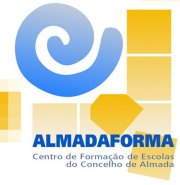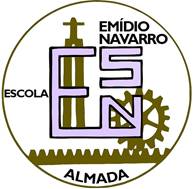Lisbon (Portugal)
ErasmusPlus-InServiceTraining
Pre-Registration
Would you like to participate in this course next school year 2020-2021? Please make a pre-registration so we can keep you informed about this course.
Dates can be subject to change and are only final after official confirmation by the course provider.
CONTENT
Local partners organize these international courses in cooperation with Eekhout Academy.
The hosting partner organisation is ALMADAFORMA, in cooperation with the Secondary School Emídio Navarro (Almada) and Eekhout Academy.
Science, Technology, Engineering and Mathematics are crucial keystones in today’s society. In current curricula and educational systems, there is a tendency to integrate these subjects into one approach: STEM.
Tackling early school leaving can start with offering teaching and learning methods that are more active and involve the students as responsible of their learning process. The STEAM-approach is such an example. Proof has already been given that this methodology hugely enhances the student’s motivation.
The participants are offered pedagogical and didactical approaches towards STEM in education. We explore some practical cases (learning by doing) and finish with a personal STEM exercise or ‘masterpiece’


The course also integrates some digital visualising techniques, adding a more artistic touch to STE(A)M. The course is organised in cooperation with a Portuguese secondary school, where we can use the technical infrastructure and digital devices.
We will fully use the interesting aspects the city of Lisbon offers. The exercises are centred on the idea of building bridges or spans. During the course visits are planned to interesting places in Lisbon that are dominated by important bridges.
Furthermore, we integrate a visit the huge former electric power plant and the recently opened museum of art, architecture and technology (www.maat.pt/en), both situated in Belém.
It’s clear that the location of the course in Lisbon, will contribute to its success.
The participants don’t have to come from education systems in which STE(A)M is an official or separate discipline. Teachers of technology, science, applied science, engineering, arts, visual arts, laboratory… can perfectly integrate the STE(A)M methods into the normal courses.
During the course there is half a day of free time to enjoy of the cultural aspects of Lisboa.
PRACTICALITIES
PORTUGAL – LISBON (South Bank Tejo)
he course is organized in the conference room of the local partner and the participants stay in a delightful 4 starhotel, both located at the South Bank of the river Tejo in Lisbon. (12 km from Lisbon airport).
There is a very easy access from the airport. Public transport and taxis provide fast connection from and to Lisbon centre.
COURSE FEE
– We offer a flexible cost structure, allowing you to select the package that fits best your personal or school situation.
– For a detailed explanation, have a look at our ‘Cost Structure‘.
FUNDING
– You can request an Erasmus Plus grant from your national agency which will cover almost all costs of this course.
– We can guide you through the process of funding and application. To do so, you need the make a pre-registration.
– After pre-registration, we’ll contact you by mail and provide the application help.
TAXI FROM AIRPORT TO HOTEL
– There is a taxi service at the airport that can drive you to the hotel.
– It’s particularly difficult to leave Lisbon between 16:30 and 19:00 h and to enter Lisbon between 08:30 and 10:30 h.
METRO / AEROBUS , FERRY AND TAXI
– You can take the metro located at exit of the arrival hall of the airport and leave the metro at the terminus station Cais do Sodré.
– The Aerobus is another good way to travel from and to the airport. The Aerobus provides a connection between the airport and Cais do Sodré.
– At the station of Cais do Sodre, you can take a ticket for the ferry boat to Cacilhas (south bank of River Tejo). During working hours, there is a crossing every 15 minutes. The ferry takes 12 minutes to arrive on the other side of the river.
– At Cacilhas you can take a taxi or tram for the remaining 5 km.
RENTAL CAR
– A rental car is not so expensive. Sharing a rental car with 3 other people for all transport during the course, can be cheaper than relying on a taxi.
– The airport is connected directly to the hotel by the Ring of Lisbon and the North-South Connection (Eixo Norte – Sul).
– Crossing the bridge, you have a marvellous view on Lisbon, the estuary and both banks of the River Tejo.
– Bring or rent a GPS.
– Check the prices of rental cars on the Internet.


